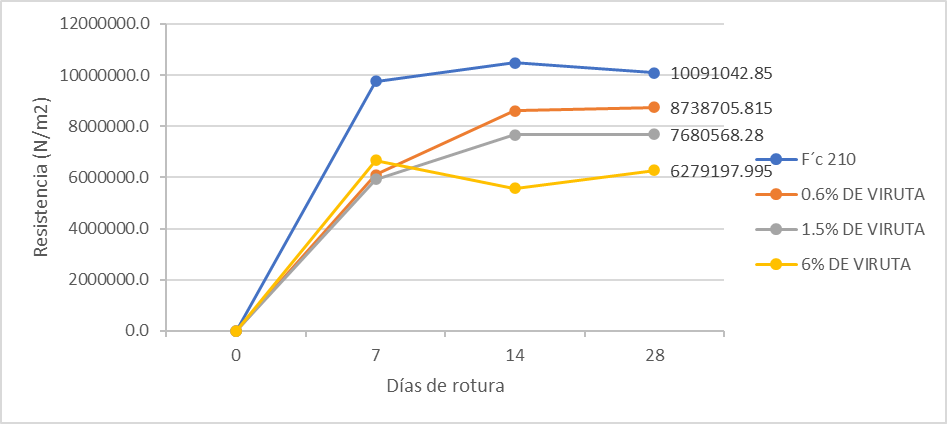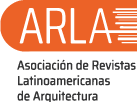Comparison of physical and mechanical properties of traditional concrete and with recycled metal fibers
DOI:
https://doi.org/10.51372/gacetatecnica232.3Keywords:
steel slag, compressive strength, tensile strength, fine aggregate concrete, concrete mixturesAbstract
The purpose of this study is to determine the physical and mechanical properties of concrete with ASTM A36 grade steel shavings, and to carry out a comparative study with traditional concrete. 36 specimens were taken as a sample and steel shavings were used at 0,6%, 1,5 and 6% as fine aggregate. The chip was obtained from the lathes of the company SMF Sagitario in the City of Lima. The research design is quasi-experimental and longitudinal; the data collection technique was observation. Inferential statistics were used to verify the hypothesis, where the results indicated that there are significant differences between traditional concrete and concrete with fine aggregate (Sig.=.000). Concluding that traditional concrete is superior to compressive and tensile strength at 7, 14 and 28 days of age
Downloads
References
M. Orozco, Y. Avila, S. Restrepo,y A. Parody, “Factores influyentes en la calidad del concreto: Una encuesta a los actores relevantes de la industria del hormigón,” Rev. Ing. Constr., vol. 33, no. 2, pp. 161–172, 2018, doi: 10.4067/s0718-50732018000200161, 2018
Z. Wang, Y.-S. Liu, and R. Shen, “Stress–strain relationship of steel fiber-reinforced concrete under dynamic compression,” Constr. Build. Mater., vol. 22, pp. 811–819, May 2008, doi: 10.1016/j.conbuildmat.2007.01.005, 2008
J. La Fuente, “Comportamiento del hormigón con áridos siderúrgicos (EAF) reforzado con fibras,” Unibersidad de Burgos, Disponible en: http://riubu.ubu.es/bitstream/10259/4646/1/Fuente_Alonso.pdf, 2015
L. A. Cobos-Sáenz de Viteri and A. W. Valle-Benítez, “Estudio comparativo sobre el comportamiento mecánico del concreto con fibra de polietileno tereftalato (PET) reciclado y concreto con fibra de acero,” Dominio las Ciencias, vol. 7, no. 5, pp. 798–818, 2021, Disponible en: https://dominiodelasciencias.com/ojs/index.php/es/article/view/2283, 2021
A. N. Briones Ponce, J. C. Zambrano Macías, J. A. Muñoz Macías, W. E. Ruiz Párraga, y R. A. Panchana de Calderero, “Análisis de la prestación mecánica del hormigón empleando virutas de acero como agregado fino,” Rev. Investig. en Energía, Medio Ambient. y Tecnol. RIEMAT ISSN 2588-0721, vol. 5, no. 1, p. 15, 2020, doi: 10.33936/riemat.v5i1.2498, 2020
S. B. Deledesma, “Resistencia a compresión de un concreto f´c=210 kg/cm2 sustituyendo agregado fino por fibras y virutas de acero,” Universidad San Pedro, Disponible en: http://repositorio.usanpedro.edu.pe/handle/USANPEDRO/14295, 2019
J. C. Moya and L. Cando Lara, “Análisis de las propiedades físicas y mecánicas del hormigón elaborado con fibras de acero reciclado,” Rev. INGENIO, vol. 1, no. 2, pp. 7–16, Disponible en: http://www.dspace.uce.edu.ec/handle/25000/8007, 2018
J. Pastrana-Ayala, Y. Silva-Urrego, J. Adrada-Molano, and S. Delvasto-Arjona, “Propiedades Físico-Mecánicas de Concretos Autocompactantes producidos con polvo de residuo de concreto,” Inf. Técnico, vol. 83, no. 2, pp. 174–190, doi: 10.23850/22565035.2170, 2019
R. Hernández and C. Mendoza, Metodologia de la Investigación: Las rutas de la investigación. Mexico: McGraw-Hill Education., 2018
SMF Sagitario, Disponible en: http://smfsagitario.com
ASTM, “ASTM A36/A36M-08 Standard Specification for Carbon Structural Steel.” https://www.astm.org/a0036_a0036m-08.html, 2021
Self- Consolidating Concrete. U.S.A, “ACI 237R-07.” 2007
A. Flores, “Análisis comparativo de la resistencia a flexión del hormigón armando adicionando fibras comerciales, virutas y limalladas de acero,” Universidad Técnica de Ambato, Ecuador, 2015
H. N. Sarta Forero and J. L. Silva Rodríguez, “Análisis Comparativo Entre El Concreto Simple Y El Concreto Con Adición De Fibra De Acero Al 4% Y 6%,” Universidad Católica de Colombia, Colombia, 2017
A. Bonilla and E. Lascano, “Comportamiento mecánico del hormigón reforzado con fibras de aluminio reciclado,” Universidad Politécnica Salesiana, Quito, Ecuador, 2013

Published
How to Cite
Issue
Section
Copyright (c) 2022 Marilyn Del Rosario Huamán Changa, Talia Mayra Rodriguez Gozar, David Díaz Garamendi

This work is licensed under a Creative Commons Attribution-NonCommercial-ShareAlike 4.0 International License.
The opinions expressed by the authors do not necessarily reflect the position of the editor of the publication or UCLA. The total or partial reproduction of the texts published here is authorized, provided that the complete source and electronic address of this journal is cited. Authors have the right to use their articles for any purpose as long as it is done nonprofit. The authors can post on the internet or any other media the final approved version of their work.






.png)




